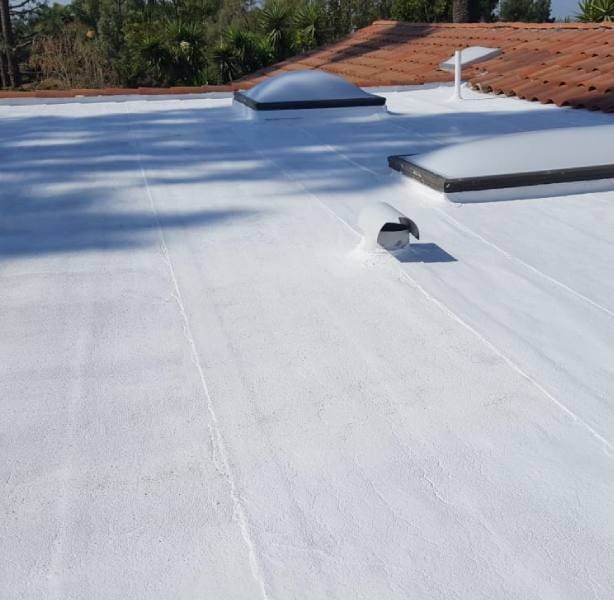Choosing the Right Material: A Guide to the Best Roofing Options for Commercial Buildings
Introduction
When it comes to commercial buildings, the roof is one of the most critical components. It acts as a shield against weather conditions, insulation against temperature fluctuations, and a structural element that influences the overall aesthetic appeal of your property. With a myriad of roofing materials available, choosing the right one can feel overwhelming. In this guide, we will delve into various roofing options tailored specifically for commercial buildings. Whether you're seeking durability, cost-effectiveness, or energy efficiency, this article is designed to equip you with the knowledge you need to make an informed choice.
Choosing the Right Material: A Guide to the Best Roofing Options for Commercial Buildings
Understanding Your Roofing Needs
Before diving into specific materials, it’s essential to assess your building's unique needs. Are you situated in an area prone to heavy snowfall? Do you experience extreme heat? These factors will significantly influence your roofing decision.
Factors to Consider
Popular Commercial Roofing Materials
Now, let’s explore some of the most popular roofing materials used in commercial applications.
1. TPO (Thermoplastic Olefin)
TPO has gained significant traction over recent years due to its affordability and energy efficiency.
-
Benefits:
-
Reflective surface reduces heat absorption
-
Cost-effective installation

-
Environmentally friendly options available
-
Drawbacks:
-
Can be less durable compared to other materials
-
Limited color choices
Installation Process
Installing TPO generally involves mechanically fastening or fully adhering sheets onto insulation boards.
2. EPDM (Ethylene Propylene Diene Monomer)
EPDM is another popular choice for flat roofs due to its durability and resilience.
-
Benefits:
-
Excellent weather resistance
-
Long lifespan (up to 50 years)
-
Drawbacks:
-
Black EPDM absorbs heat, which may increase cooling costs
Maintenance Tips
Regular inspections for punctures or tears can prolong the life of EPDM roofs significantly.
3. PVC (Polyvinyl Chloride)
PVC roofs are known for their durability and resistance to fire and chemicals.
-
Benefits:
-
Highly reflective surfaces reduce energy costs
-
Resistant to mold and algae growth
-
Drawbacks:
-
More expensive than TPO and EPDM
Environmental Impact
PVC roofs can be recycled at the end of their lifespan, making them a more sustainable option compared to others.
Comparing Costs: An Overview Table
| Material | Average Cost per Square Foot | Lifespan | Energy Efficiency Rating | |----------|------------------------------|----------|--------------------------| | TPO | $3-$5 | 10-20 years | High | | EPDM | $4-$8 | Up to 50 years | Moderate | | PVC | $6-$10 | Up to 30 years | Very High |
Choosing Contractors Wisely
Once you've decided trusted roof services Renton Washington on a material, finding a reputable commercial roofing company becomes paramount.
What Should You Look For?
Common Mistakes When Choosing Roofing Materials
Even seasoned property owners can fall prey to common pitfalls when selecting roofing materials.
Mistake #1: Ignoring Local Building Codes
Before proceeding with any installation, consult local regulations regarding roofing materials.
Mistake #2: Focusing Solely on Cost
While budget considerations matter, overlooking quality can lead to higher long-term expenses through repairs or replacements.

FAQs about Commercial Roofing Options
Q1: How often should I replace my commercial roof?
A1: Typically every 20-30 years depending on material quality and maintenance practices.
Q2: What is the best roofing material for flat roofs?
A2: Both TPO and EPDM are excellent choices for flat roofs due to their durability and low maintenance needs.
Q3: Are metal roofs suitable for commercial buildings?
A3: Yes! Metal roofs offer longevity and are resistant to severe weather conditions but may have a higher initial cost.

Q4: Can I install a new roof over my existing one?
A4: It depends on local codes; sometimes it’s permissible, but removing old layers may be more beneficial long-term.
Q5: How do I know if my roof needs repair?
A5: Look for signs like leaks inside your building or visible damage on the exterior surface.
Q6: What’s more important—insulation or ventilation?
A6: Both are crucial! Proper insulation helps regulate temperature while ventilation prevents moisture buildup that could harm roofing materials.
Conclusion
Choosing the right material is vital when it comes to commercial buildings. Each option has its pros and cons; understanding these aspects helps you make an informed decision that aligns with your goals—whether it's cost savings, energy efficiency, or longevity. Partnering with a reliable commercial roofing company ensures you receive expert advice tailored specifically for your needs. Remember—a well-chosen roof not only protects your investment but also enhances your business’s reputation!
This extensive guide offers insight into selecting suitable roofing options by addressing various aspects from climate considerations down through cost comparisons while providing practical tips along the way! Whether it's TPO or metal roofs you're considering—the value lies in making educated choices based on comprehensive research!